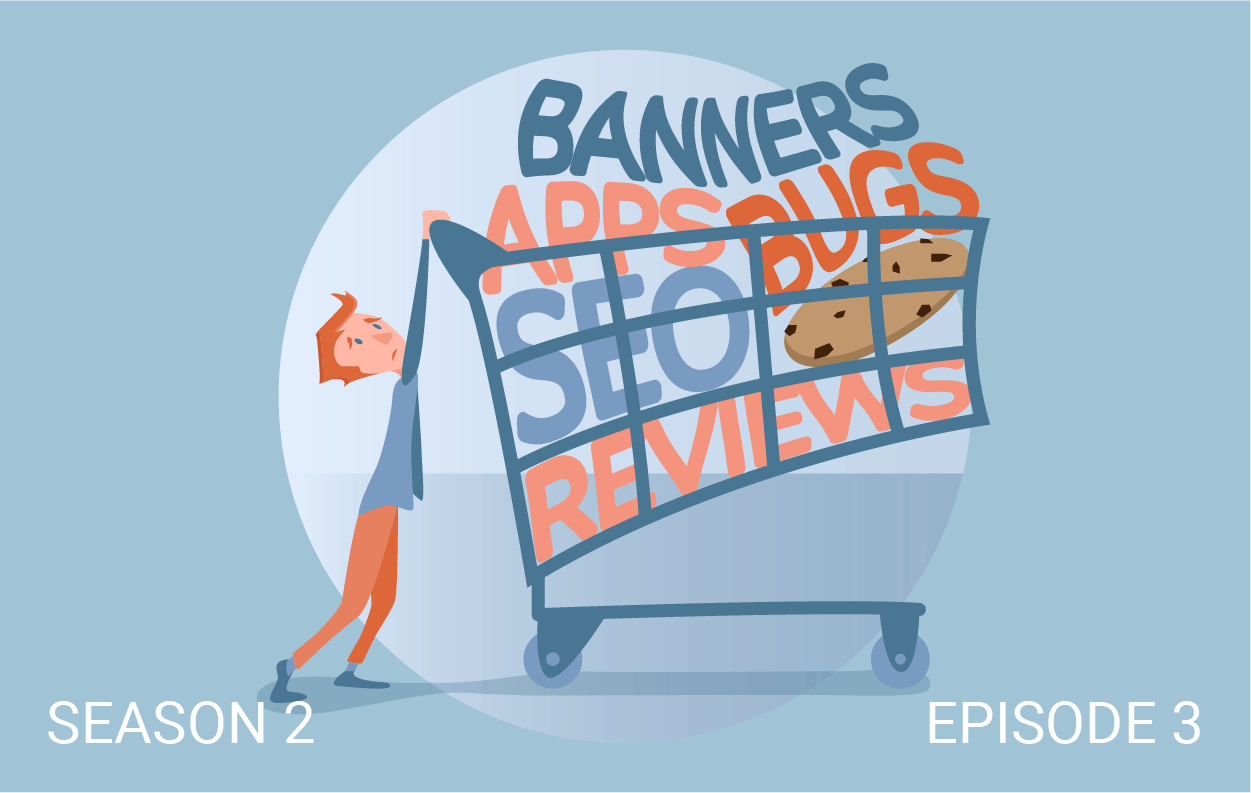
I’m dreaming of a black friday
How the holidays get crazy
MAKING IT WORK PODCAST
Season 2 | Episode 1
We're back for a second season, and we're feeling festive. For most small businesses the period from Thanksgiving to Christmas is crucial for driving sales, but what's happening behind the scenes?
From placing orders in August to roping in friends and family as free labor, we talk to four entrepreneurs about how they plan for the few months that can account for 80% of their sales.
So should you take on the big boys on Black Friday? And, more importantly, what's the deal with pumpkin spice lattes? Tune in to find out.
Listen now
SHOW NOTES
How do small businesses prepare for the manic holiday season?
Businesses are no strangers to peaks and troughs throughout the year. But in recent years, the peak on Black Friday represents the start of a plateau that continues through to the January sales. It’s a key – but by no means the only – element in the evergreen challenge of staying competitive in a changing world.
We investigate how some small business owners have adapted to the evolution of what is (potentially) the most wonderful time of the year for businesses.
The 2020 effect
The enhanced period of consumer activity over the holiday season brings opportunities and challenges for businesses in any normal year – and 2020 was anything but normal. With national and global lockdowns and panic buying suddenly part of the equation, large numbers of shoppers made the transition from brick and mortar stores to online.
“A lot of things are up in the air right now in Chicago, in regards to COVID. So there might, might have to be a lot of changes that we have to make suddenly,” said Back of the Yards Coffee Co. co-founder Mayra Hernandez. “There’s a lot of unknowns. Aside from a pandemic, there's the election. There's just a lot of uncertainty in the air. I don't know what the hell's gonna happen.”
Preparing for the expected
Mayra at least has the benefit of experience. The demand for good coffee is something that seems unwavering, and as an established concern, she plans for a spike in sales during the holiday season as customers snap up mugs, bags of coffee and, in particular, gift cards. Still, the situation has thrown a few curveballs, such as shortfalls in staff, “…we’re forced to get creative. Sometimes on the spot! Sometimes we just have one person working, and suddenly you have a long line of customers.”
Ebun Olaloye agrees. As the founder of Live Breathe Futbol – a Philadelphia-based company that makes apparel for fashion-conscious soccer fans – “…we've already started in around September. Thinking about, okay: what products are we gonna push? What's the story around this product? Is the email marketing set up right? We're trying to have wireframes built on rough messaging. Then as it gets closer to the time, we really dial it in.”
But even for businesses new to the game, there’s the tacit understanding that preparation starts months before. Kat Samardzija is the founder of Locker Lifestyle, a relatively young Chicago-based company that makes wrist wallets for working out. “We're prepping for the holiday, and preparing for the madness in July.” Kat sets up a content calendar, working backwards from the onset of the holiday season to ensure that PR, photography and shipping supplies are all lined up. “All these different holidays come really, really fast, so we make sure that we're stocked up on shipping labels, poly mailers, and most importantly, inventory.”
The entrepreneurs






Nik Hawks






Ebun Olaloye






Mayra Hernandez






Kat Samardzija
Taking (on) stock
That last part is vitally important: all the planning in the world amounts to nothing if you don’t have anything to sell. Marya has to buy inventory at least 70 days in advance – aside from shipping and fuel charges going up, factors such as Chinese New Year can hugely increase demand on manufacturers and extend lead times.
Not that it always goes to plan, of course – as both Ebun and Kat have discovered. “We're not the only brand that wants to make stuff for the holidays,” says Ebun. Every other brand is trying to do the same thing and you've got to think, what is your relationship with the factory? Will they prioritize our order?”
It’s a learning process for all concerned. In Kat’s case, it’s about forecasting inventory and working with different manufacturers with different lead times. “We were out of our number-one selling product for over a month, and it pressured people. We were adding them to wait lists and by that time they're no longer interested. So we lost a lot of customers by running out of our number one selling product.”
Keeping the customer satisfied
Which of course is every merchant’s worst nightmare. However good a product or how well it’s marketed, it’s going to fail without a steady stream of customers. And being caught short during the holiday season means running the risk of disappointing – and losing – those very customers.
Nik Hawks is the co-founder of Paleo Treats. Since 2009, he and his San Diego-based team have been making desserts for anyone pursuing a paleo lifestyle. Having had the holiday season creep up on him in the past, he’s taken a different approach this year.
“We usually kind of realize it's Black Friday about a week out, and scramble through it.”
“We usually kind of realize it's Black Friday about a week out, and scramble through it. This year we've started working with a company called Zaius, and they have assigned us a customer success manager. And they've been really good about saying, hey guys, here we are in October, Black Friday is coming, the holiday season's coming. What are your email plans?” This has forced Nik and his team to take a more strategic approach than before.
Ebun understands the value of strategically building customer relationships. “We don't have the highest number of customers, but the lifetime value per customer for us is really, really high. So you have people that in a holiday season, they're gonna drop a thousand bucks on LBF gear. If you have enough people that are doing that, that's a pretty decent return.”
The competitive element
But people only have a finite amount of money to spend, and there are thousands upon thousands of competitors fighting for every last cent. Life isn’t made any easier by the introduction of brand-specific events such as Prime Day. It means that competing – and even participating – can be an added and unwelcome expense.
“There's a huge pressure to participate in those events, especially with Amazon because they're doing so many deals, the ads are going up, and then also the cost to even advertise on Facebook and Instagram is also going up,” says Kat. “So you feel this pressure to give certain coupons and deals or free shipping just to be able to be on the same level with them.”
But sometimes the winning move is to play to your own rules. “Black Friday and Cyber Monday, everyone's looking for a deal, discounts and all that. That's not really gonna be our approach,” says Ebun. “The way we do it is: This Black Friday, we're launching this new collection. Because you're already in the mood to shop anyway and we are going to give you something new you want and you're gonna get anyway.”
Nik’s approach is also a little different. “We’re going to do Pink Friday instead of Black Friday – it’s the company color. We’re gonna run a super transparent marketing gig this year: on Thursday, you're gonna get a discount for 20% off, on Friday it'll be for 17%, on a Saturday for 15%, and on Sunday for 10%, you can buy on any one of those days, but the discounts are going down every day.”
And daring to be different doesn’t just mean taking a stance against retail behemoths like Amazon. Mayra is firm on her resistance to another divisive seasonal trend: the pumpkin spice latte.
“That's something that we fight about! Sometimes we do feel like we have to jump on the bandwagon and do the pumpkin spice thing for fall. But we really want to be different and we wanna honor our culture and our community with things that are more tailored towards Mexican culture."
“You don’t need to make a specific Christmas drink – instead we'll highlight our Cuetlaxochitl coffee blend which is indigenous language for the poinsettia flower, which is native to Mexico. Would the Mexican community appreciate a nice gingerbread cappuccino? I mean, I could give it a try. I'll ask around!”
Listen to the episode
More episodes



Let me pencil you in: Why are
entrepreneurs so bad at turning off?
Not all business owners were born organized. We talk to the entrepreneurs about strategies for streamlining schedules and managing their 'me-time'.



Click and mortar: How to build
an online store
You've got a great product, but how do you go about selling it online? We ask our entrepreneurs to tell us how they went from marketplaces and social media to setting up their own web stores.